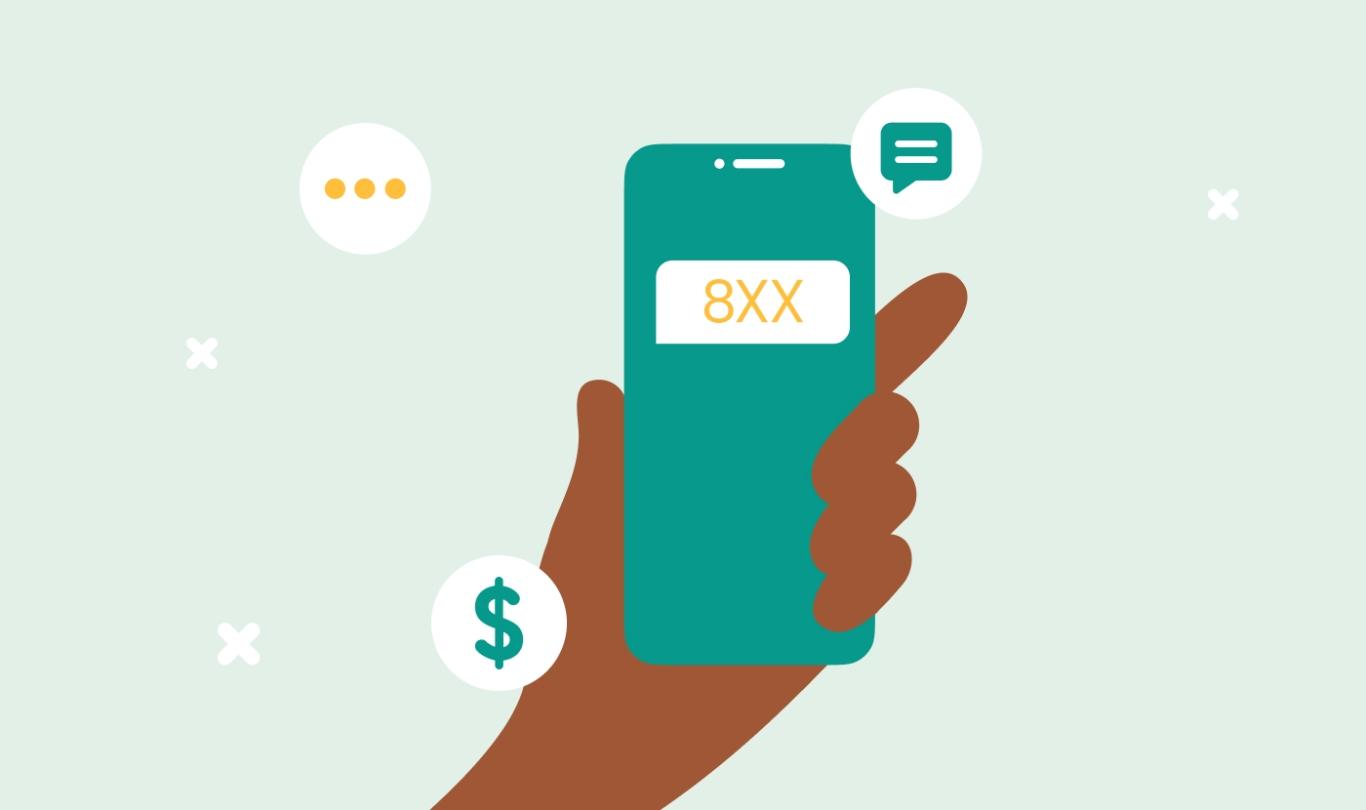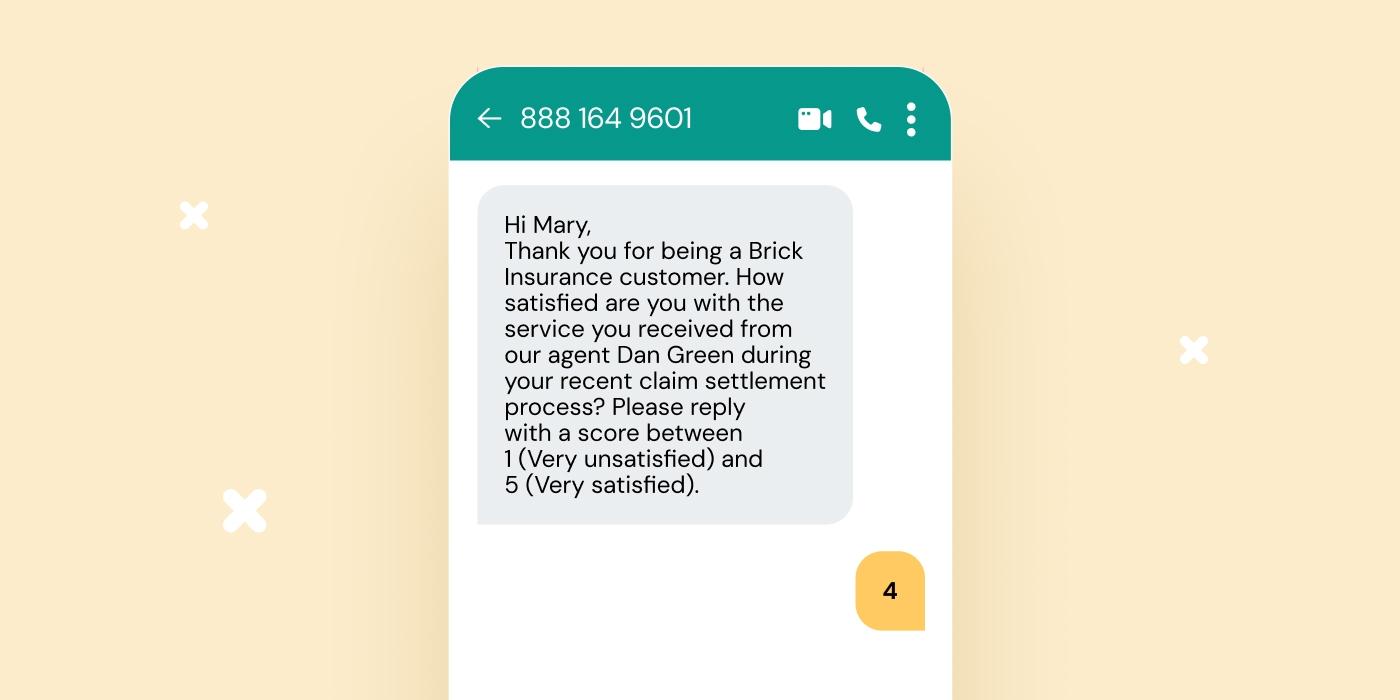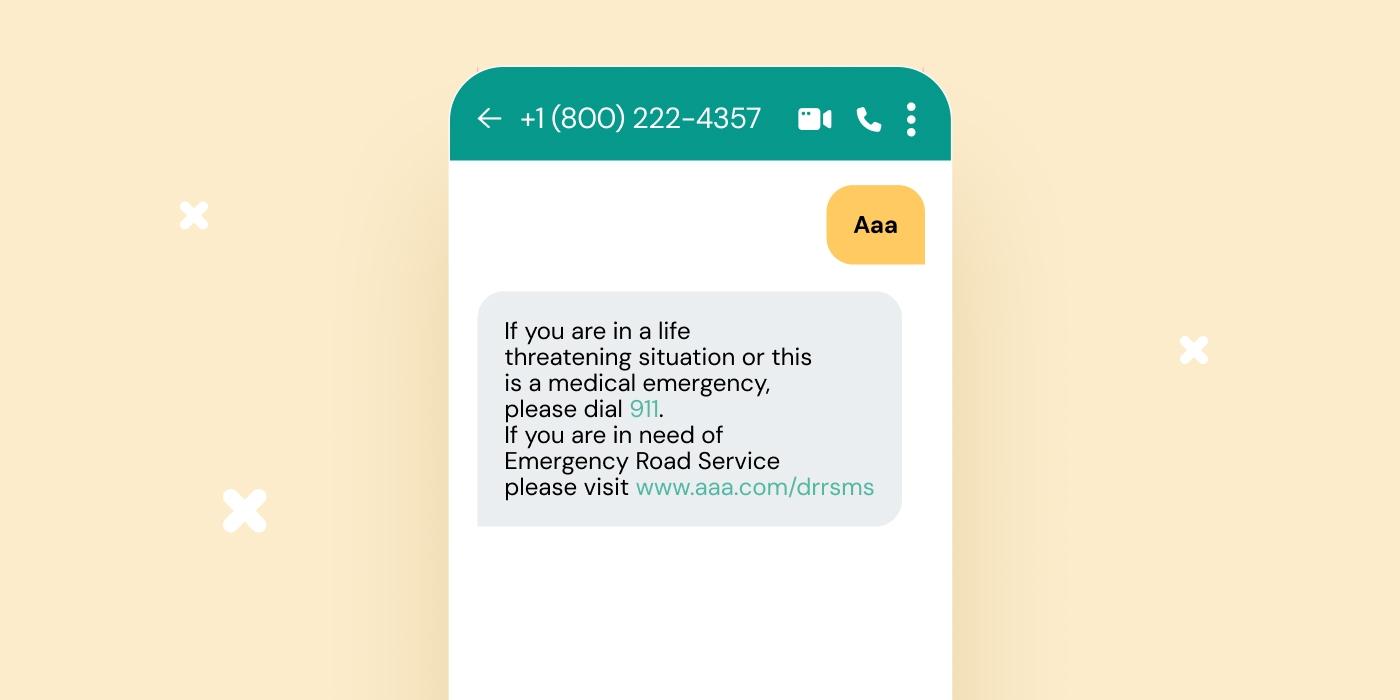Products
Toll-free texting essentials: A guide to toll-free SMS and MMS

Products

You’ve probably heard that text messaging and SMS services are being used by businesses more than ever before. And if your business has a toll-free phone number, you may not know that people can, and do, text it – whether it’s SMS-enabled or not! Whether you’re doing mobile marketing, digital marketing, or customer service, toll-free texting should be a part of your customer communication strategy. And you can easily enable a toll-free number to receive and send SMS and MMS.
Let’s look at toll-free enabled SMS and MMS, its benefits, and some use cases so you can decide if it should be your organization’s next communication priority.
Toll-free texting is a business-friendly messaging service that allows you to communicate with customers via SMS or MMS using toll-free numbers (TFNs).
Toll-free numbers start with specific prefixes beginning with the number 8.
Every phone number that works for toll-free calling can be adapted to send and receive toll-free texting. This is great for businesses that want to use the same familiar number to call and text their customers.
Toll-free texting can create more opportunities for customers to reach out to your brand. It can help reduce customer complaints since you can quickly and easily respond to customer texts, build trust by making it easy for them to reach you, and help you to communicate more effectively.
With toll-free messaging, you can run messaging campaigns using any of the toll-free prefixes. That means you can use a text-enabled toll-free number to send out mass messaging, individual texts, automated texts, verification texts, and notifications, and you can engage directly with customers using two-way messaging.
With business communication in particular, toll-free texting enables you to engage customers through SMS or MMS using your existing toll-free numbers. Plus, toll-free numbers are portable. This means that if your business moves locations, you can keep the same number for sending and receiving important messages which can help you ensure a seamless customer experience.
Toll-free texting offers some unique advantages. For example, you get faster provisioning, and you can send more messages per second. Let’s look at some of the specifics of toll-free SMS and MMS.
| Feature | Text-enabled toll-free number capability |
| Digital length | 10 digits |
| Voice enabled | Yes, U.S. and Canada |
| Messaging model | Application-to-person (A2P) |
| Provisioning | 1-5 business days |
| Keywords required | STOP, Unstop – Network managed |
| Throughput | 10+ msg/sec |
Let’s take a deeper look at some of the text messages you can begin sending from a toll-free number. For the most part, you can send the same texts as with any other service. But since you already have a toll-free phone number, converting one to do text messaging saves you the trouble of buying a new number. It’s a great way to maximize your current communications stack.
Now, you can send toll-free messaging such as:

Toll-free texting helps you communicate in a way that helps you be more available to your customers and provides them with a convenient way to reach out to your business. This is why many people assume they can text your toll-free number. Here are a few other benefits of having a text-enabled toll-free number:
AAA offers roadside service to its members if they have car trouble. Several years ago, AAA discovered that their members were texting their toll-free number when they needed help, and got no response because the number hadn’t been text-enabled.
With help from Sinch, AAA re-configured their 800 number to accept texts. Now, with improved efficiency and automation, their members can get roadside service more quickly, and at less cost to AAA. Everyone wins!
That’s one example of the two-way text-based conversations you can have using a toll-free number. It speeds up the communication process, getting your customers what they need, and with greater efficiency on your end.

Toll-free numbers allow companies to use the same number for voice calls, SMS, and MMS, so a consumer can identify who a message is coming from and learn to recognize it. This makes it easier for customers to trust these businesses as they begin to recognize where to turn for reliable communication and support.
With toll-free texting, you can keep using the same number for your voice and messaging programs in the United States and Canada. This greater efficiency cuts costs by cutting down the costs of customer service and automated support, saving time and making everything simpler. Employees will remember your number more easily, and customers will recognize it the more they use it.
If you want to start using toll-free texting, the first thing to do is enable your existing toll-free number so that it can send and receive texts as well. This is the first step to begin using toll-free messaging for customer engagement.
Here are a few tips to make sure customers respond well to this new service:
Once you get your toll-free texting service going, there are a few types of text messages you should avoid sending. Here are the kinds of subjects your messages should avoid:
If you text any of the above from your toll-free number, you can expect to have it shut down.
Short codes are 5-digit codes (or 6 or 8), are designed for high-volume text communications. This type of text message marketing has its uses, but they’re confined to certain categories.
For example, while you can transmit SMS or MMS messages with short codes, you can’t use one to send or receive voice communications. So if you want to use the same number for texting and phone calls, short codes won’t work.
Short codes are best for sending lots of texts in a very short time. With short codes, you can send 500 messages per second.
That’s one reason short codes tend to be more costly. So if you’re looking to start using SMS for business communication, you can do it with toll-free texting at a lower cost, until you work out the kinks and get your subscribers engaged and familiar with receiving texts from you. When you believe you’ve got a handle on it, you might then decide to increase your investment and start using short codes too.
Determining the cost for setting up toll-free texting – or any type of text message marketing – isn’t straightforward because many of the fees vary by carrier.
But what types of fees come into play?
First, there are standard message fees and number lease fees. So, for each toll-free number you want to use, you’ll pay a small additional amount. This is one reason it’s smart to use the same toll-free number for text and phone. If you’re already paying for the phone number, reconfiguring it to also use text messaging makes sense.
Then, there are carrier pass-through fees. At Sinch, we pass these to you with zero markup. Please note that these are subject to change by the carriers.
Toll-free texting is a great way to get into SMS marketing without having to buy a whole new number if you already have a toll-free phone number. You can send most of the same types of messages and in both SMS and MMS formats, and you can send across the U.S. and Canada with just a single number.
You’ll be able to engage customers who prefer texting, stop missing texts they may already be sending you, and build trust and brand authority.
If you want to start using toll-free texting, your first step is to create with a text messaging platform like Sinch Engage or set up an SMS API with Sinch to integrate your customer databases.
You’ll also want to review our SMS compliance guide to make sure you’ll be following all the legal requirements of using text message marketing. There are more unique regulations associated with SMS marketing than with most other channels.